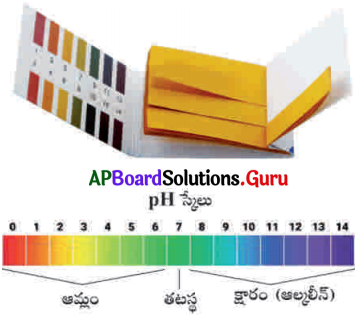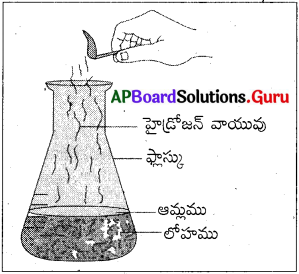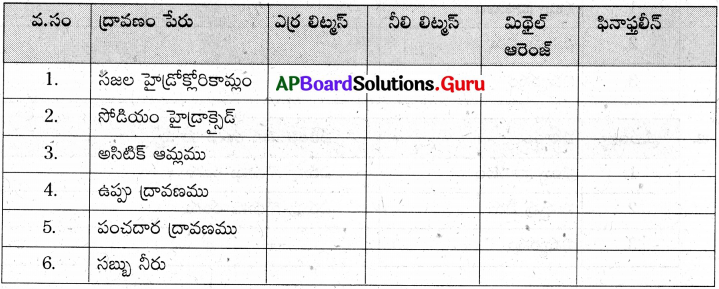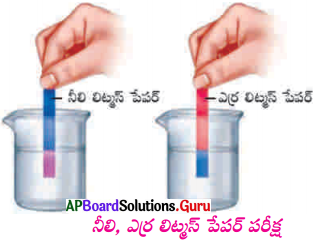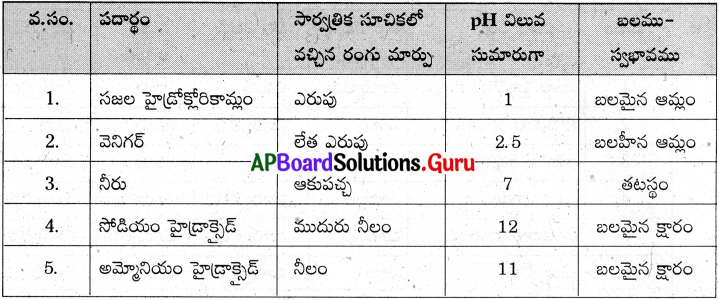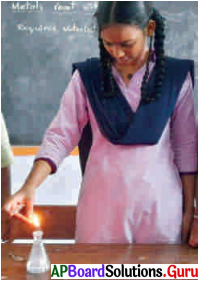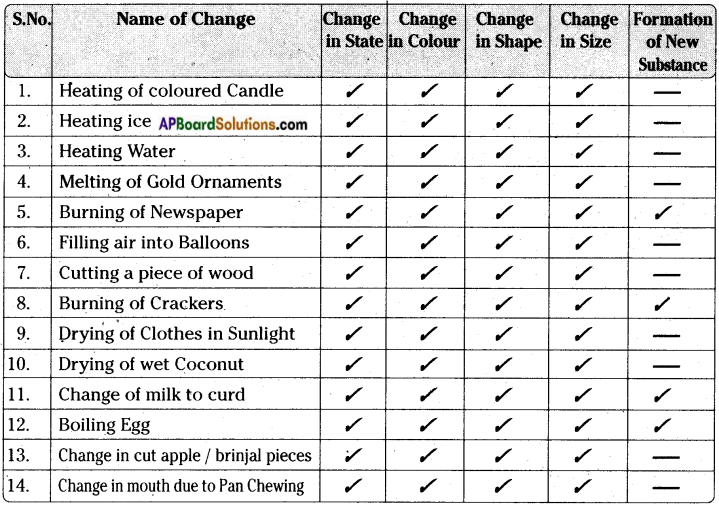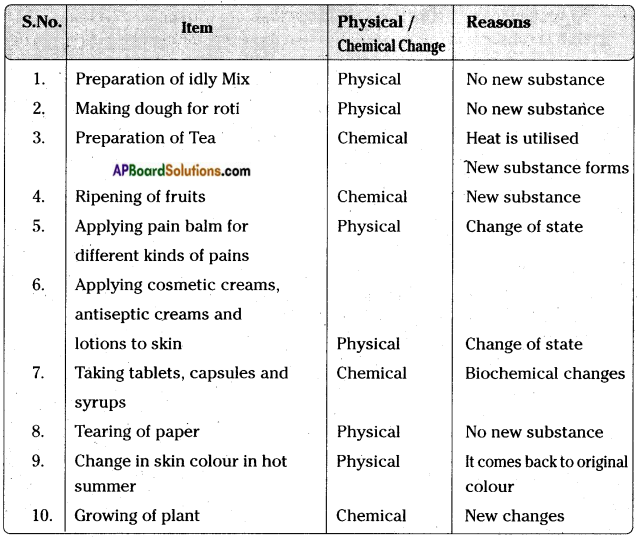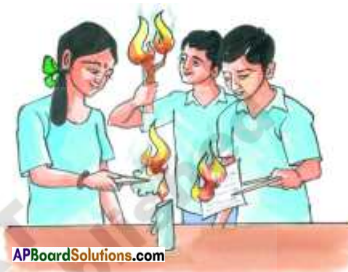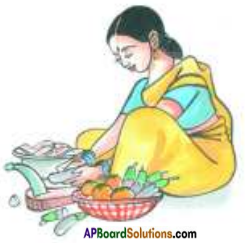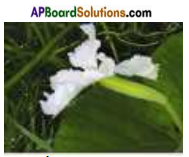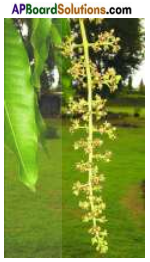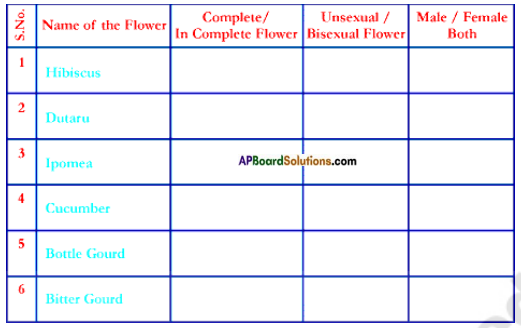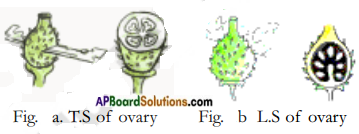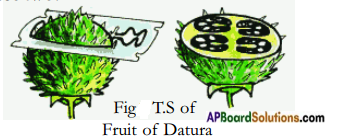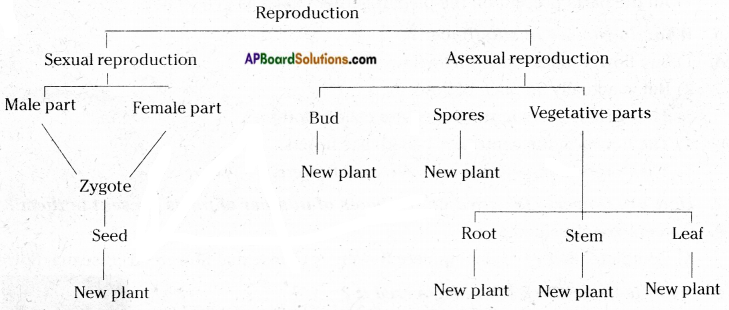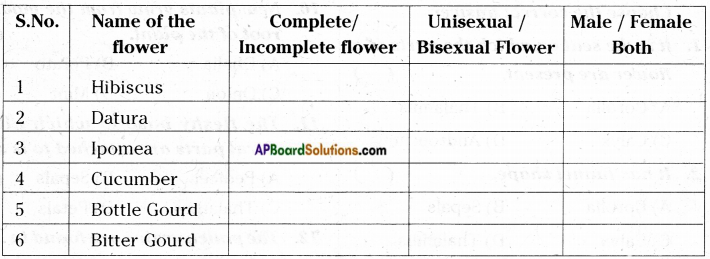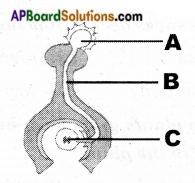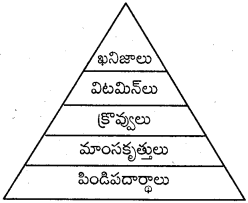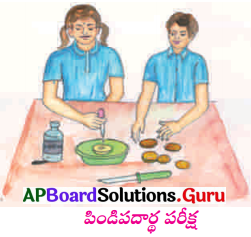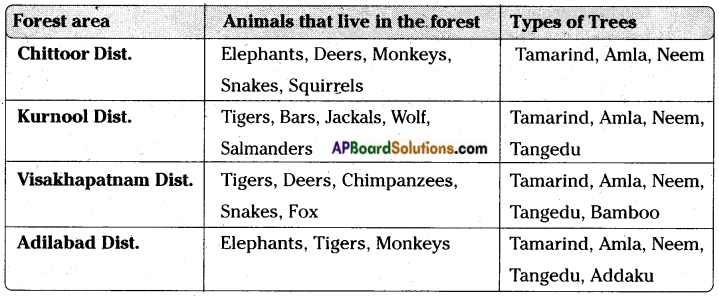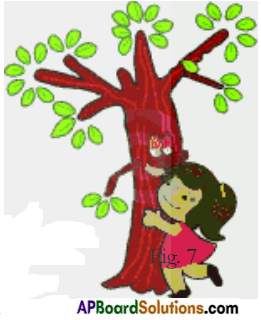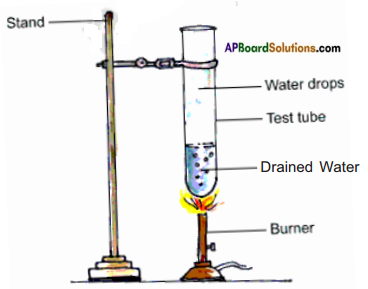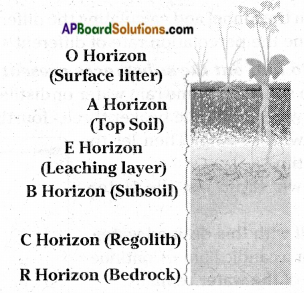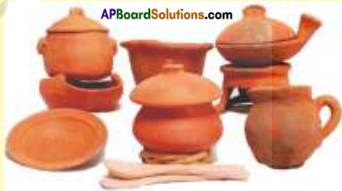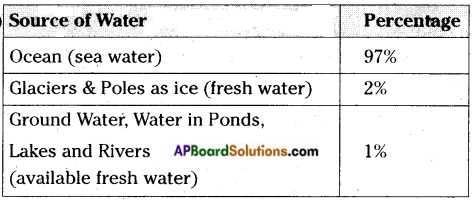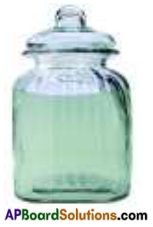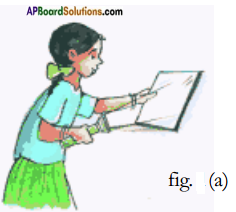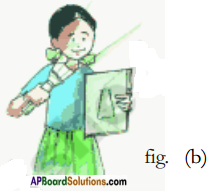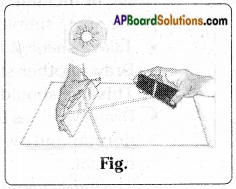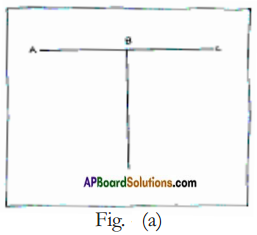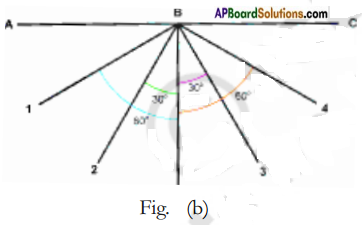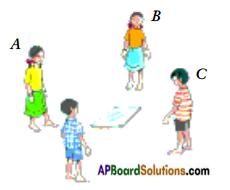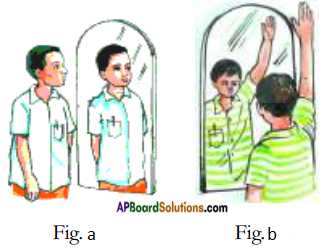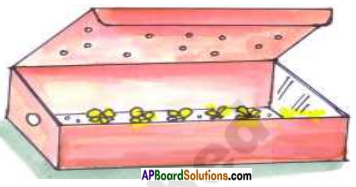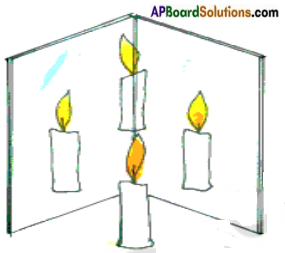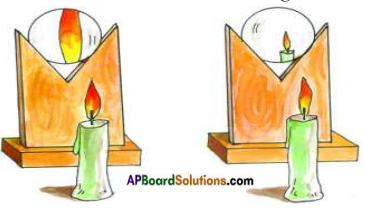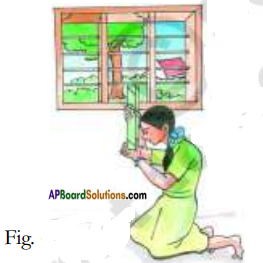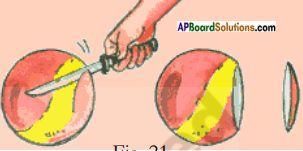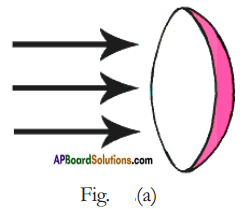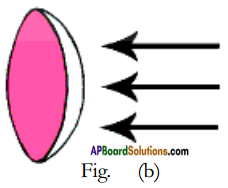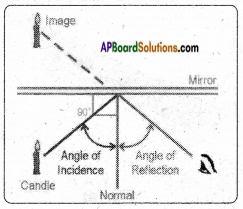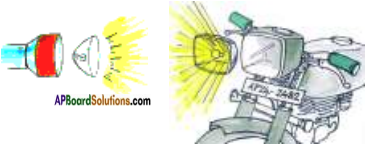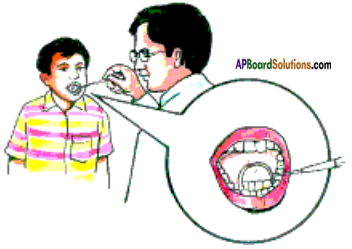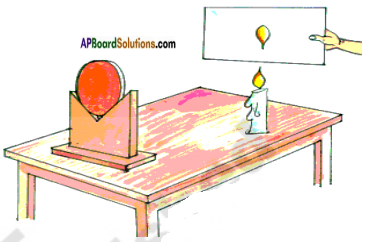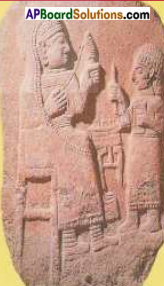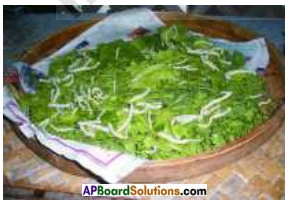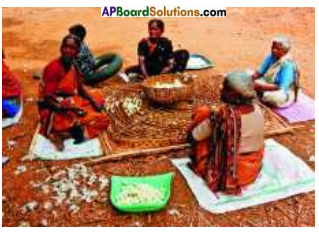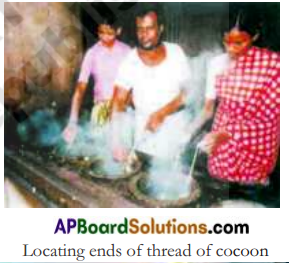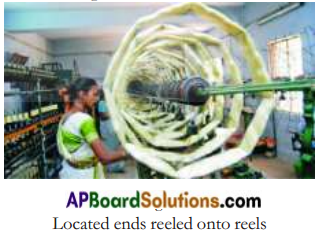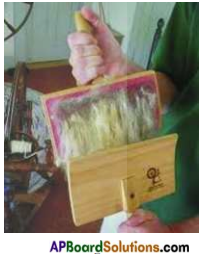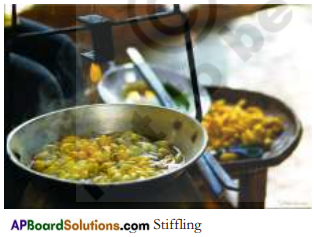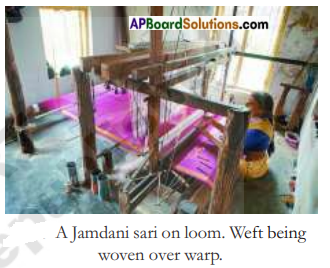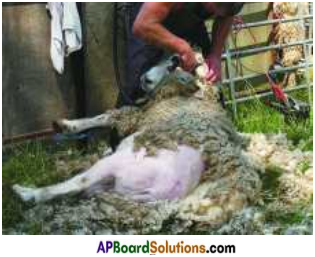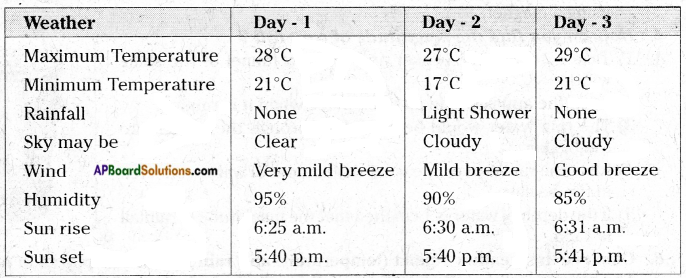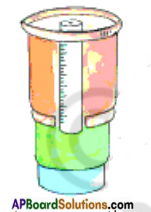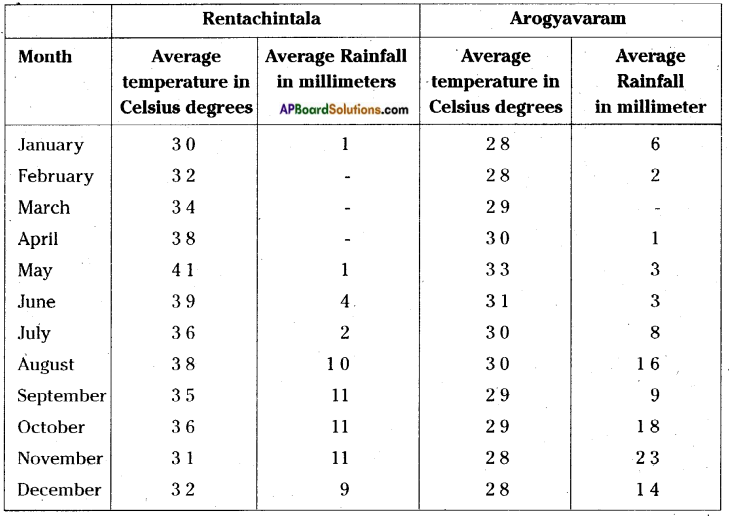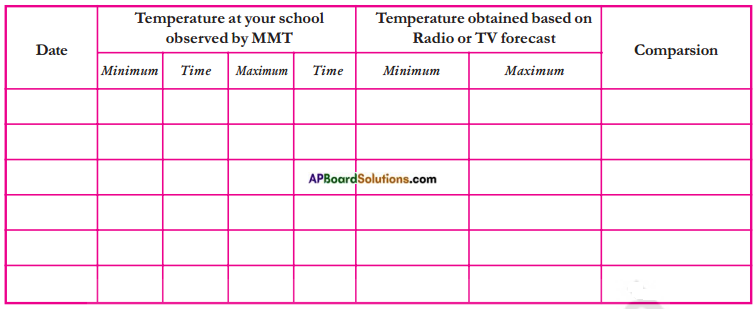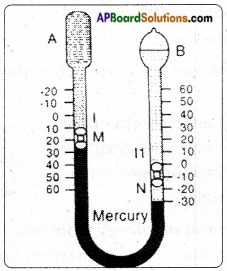AP State Syllabus AP Board 7th Class Science Important Questions Chapter 13 Seed Dispersal
AP State Syllabus 7th Class Science Important Questions 13th Lesson Seed Dispersal
7th Class Science 13th Lesson Seed Dispersal Important Questions and Answers
Question 1.
How seeds are formed and give birth to new plants?
Answer:
- We know that after fertilization ovary develops as fruit and ovules develop into seeds.
- When the seeds germinate they give birth to new plants.
Question 2.
Why are seeds disperse to different distances. How do they disperse?
Answer:
- We know that seed dispersal is necessary to grow tiny plants of the same species.
- To avoid competition with the mother plant for air, water and minerals plants disperse their seeds to different distances.
- But the process of dispersal varies from plant to plant.
- Plants have special mechanism for seed dispersal.
![]()
Question 3.
Explain how does the dispersal of seeds through wind take place.
Answer:
- The seeds of caltropis have light and hairy structure at one end.
- They travel with wind and settle at a suitable place to germinate.
- Seeds that are dispersed through air are usually light and are either very small or are light with wings on them or some hairy structures on them.
- The seeds get adapted in such a way that they get carried away easily by wind.
- Some seeds float in air, some propel to travel short distances.

- In some plants like orchids seeds are minute with inflated covering.
- In plants like maple, seeds have wing like outgrowths.
- Cotton seeds have hairy structures.
- These types of specialized structures, present in the seeds, will be helpful for dispersal by air.
Question 4.
Write a note on dispersal of seed by water.
Answer:
- The seeds adapted to float on water are usually light. The outer covering of the seed has empty spaces filled with air and some are fibrous with air spaces that encloses the whole seed or fruit.
Eg: Coconut. - The entire Coconut fruit floats on water and moves from one place to another.
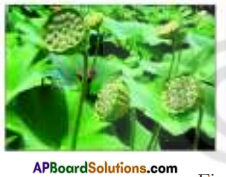
- When it reaches the ground it germinates.
- That’s why we usually find coconut trees growing near sea shores.

- Seeds that are heavy usually fall to the bottom of water sources and get carried by the flow of water. Ex: Seeds of Lotus.
![]()
Question 5.
Describe how animals help in the dispersal of seeds.
Answer:
- Seeds are dispersed by animals in many ways.

- In case of fleshy fruits, the fruit is eaten by animals while some dry fruits, with specialized structures like hooks, thorns, hairy parts, get stuck to the bodies of animals and get carried to distant places.
- We find such seeds in some kind of grass plants.
- We notice some kinds of fruits or seeds getting stuck to our clothes when we walk through fields and bushes.
- They have hooks or thorns on them.
Question 6.
Explain how birds are also responsible for the dispersal of seeds.
Answer:
- Some seeds are sticky and get stuck to the beaks of birds and in course of flight they fall down at distant places.
- Often some birds carry seeds with their beaks. Some of them fall before they reach their nesting places.
- We know some seeds have to pass through the guts of some birds before they germinate.
- Birds like Bulbuls, Mynahs, Crows eat some fruits (Eg: Neem fruit) the outer fleshly part gets digested in the food canal and the seed coats of them become tender.
- They are then dispersed to other places as bird droppings.
Question 7.
Why plants produced a large number of seeds?
Answer:
- We have observed that fruits and vegetable plants that grow in our home garden produce a large number of seeds.
- Some fruits grow in singly whereas some are in bunches.
- Some fruits have a single seed in them and some have a large numebr of seeds.
- All the seeds of a fruit should be able to germinate to produce new plants.
- Actually this does not happen. If this happens we will see only same type of plants in large number in our surroundings.
- All seeds don’t germinate. Some seeds never germinate to produce new plants. Some seeds germinate but plants die before maturation.
- To overcome these problems plants produce a large number of seeds.
![]()
Question 8.
Collect some seeds like grass, poppy, bhendi, coconut etc. Try to collect different types of seeds like seeds with hair, thorns, big, small, light, heavy etc., and record the information in the given table :
Answer:
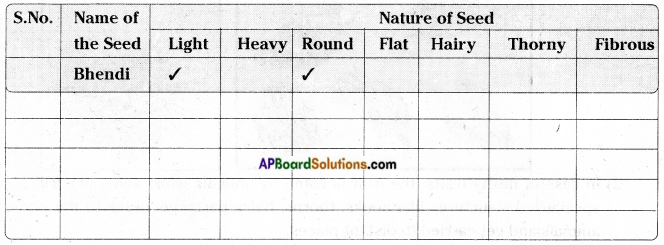
Question 9.
Observe the following figures. They are seeds with different shapes and structures.
Answer:

Question 10.
How do squirrels help in dispersal of seeds?
Answer:
- It collects a lot of nuts and hides them underground before onset of winter.
- It can hardly eat all of them and even forget where it has hidden its nuts!
- Thus we have several nut trees at different places.
Question 11.
Do you agree with the fact that seeds are also travelling by aeroplanes, and ships ? Explain,
Answer:
- Nowadays we see diffeernt kinds of fruits and vegetables around us.
- Import and export of grains like wheat pulses, maize, paddy is a common practice through which many seeds get dispersed all over the world.
- It is a wonder now that seeds also travel by aeroplanes and ships.
Question 12.
How many seeds a mustard plant does produce? How do you feel about it?
Answer:
- A mustard plant produces more than 10,000 seeds in its lifetime.
- If all the seeds germinate to grow into adult plants, think how many seeds would be produced. If this happens for a period of six years the entire globe will be covered with mustard plants.
![]()
Question 13.
Some animals eat fleshy fruits. How do they disperse the seeds of those fruits.
Answer:
- Many fleshy fruits are meant to being eaten by animals.
- The fleshy part of the fruit is eaten leaving the seeds uninjured.
- Some seeds get dispersed through animal excretions
Question 14.
With the help of your teacher fill up the table given below.
Answer:
Observe the animals in your surroundings. Fill in the following table.

Question 15.
Describe how does the dispersal of seeds take place by the bursting of fruits that throw the seeds out.
Answer:
- Many fruits enclose the seed in a capsule or pod.
Upon drying the pod explodes releasing the seeds with great force in the surroundings. - We find such type of seeds in Bhendi, Mustard and seeds of Pea family.
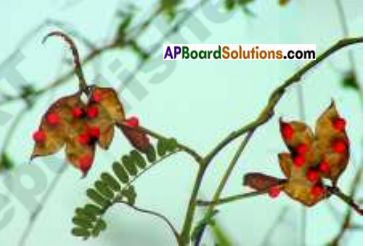
- Some seeds grow in capsules which when touched burst and uncoil with a force in such a way that they scatter the seeds all around.
- The seeds of Balsam are dispersed in this manner.
- We also noticed that some fruits explode when we sprinkle water on them and the seeds get dispersed.
![]()
Question 16.
Describe how the seeds of fruits tomato, cauliflower, guava, sugar cane transfered across the globe by people.
Answer:
- We should know from where this tomato fruit has come from and that it is not native to India.
- When European travellers came to trade in India, they left the seeds of vegetables like tomato, cauliflower, guava, pear on their return.
- Similarly sugarcane which is native to India and is used worldwide for production of sugar, is a good example of how people transfer seeds/fruits from one place to another.
Question 17.
Use the information in the given table to answer the following questions.
| Agents of seed dispersal | Name of the seed / fruit |
| by wind | Milk weed |
| by water | Coconut |
| by animals | Grass plants |
| by bird | Neem |
| by man | Mango |
i) What is the agent of coconut seed dispersal?
ii) What is the dispersal agent ofneem seed?
iii) Name the seed which is dispersed by wind?
iv)What are the seeds dispersed by human intervention?
Answer:
i) Water
ii) Birds
iii) Caltropis
iv) Mango
